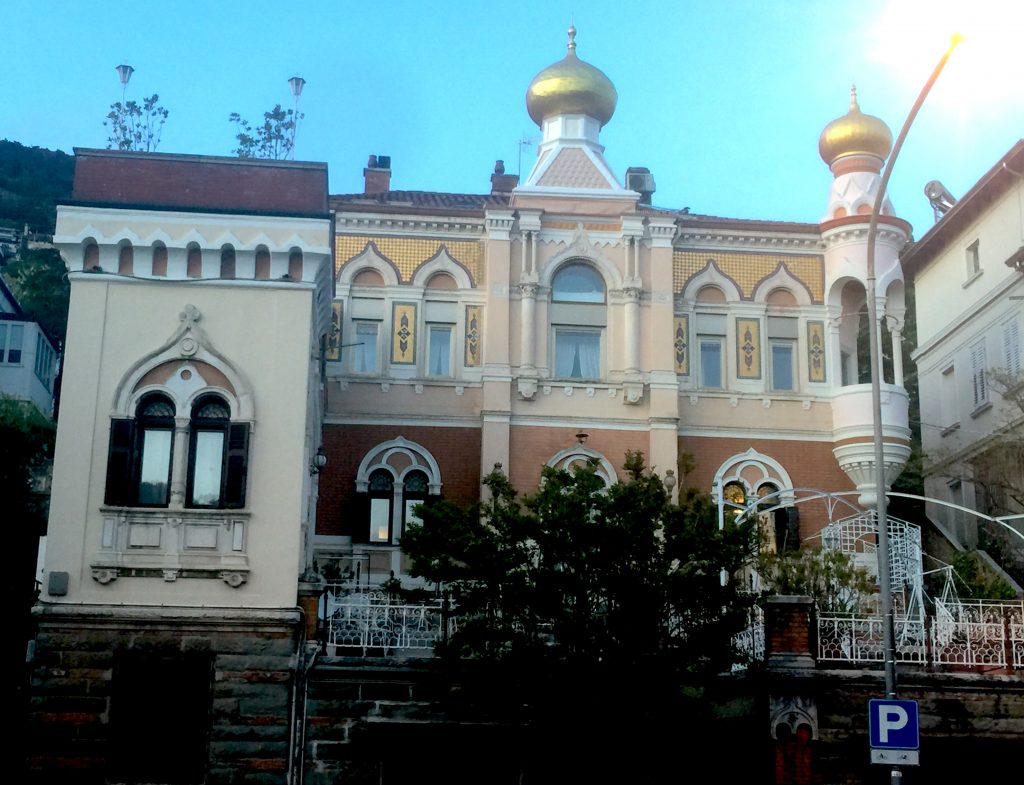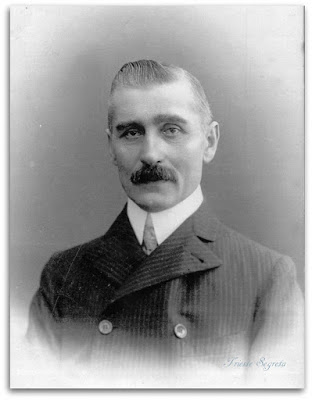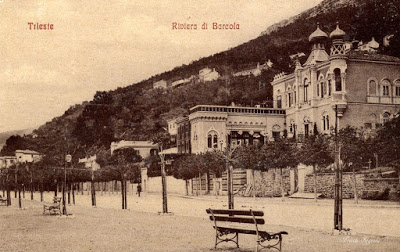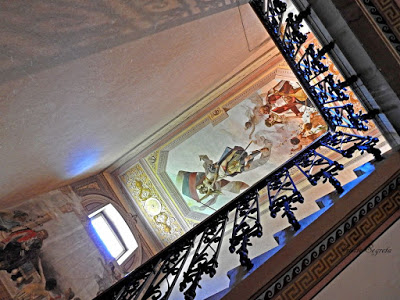by Alessandra Ressa
If you visit the residential waterfront neighborhood of Barcola, in Trieste, you won’t help but notice an unusual mansion facing the main road in Viale Miramare 229. It is Casa Jakic, known by locals as the house with onions because of its golden onion-shaped domes. Its Central European look is also responsible for its second nickname, Little Kremlin.

Barcola had been a sleepy farmland until the Triestine aristocracy chose it as the perfect location for summer homes in the mid 1800s. The style of these luxury homes was mainly eclectic, with castle-like villas, Venetian mansions, neoclassical homes quickly replacing farmers’ and fishermen’s stone shacks holding to one another on the steep hills that connected the Karst to the sea. Many of these tiny homes are still standing in Barcola today up the narrow steep stairways behind mansions and apartment buildings.

The so-called house with onions is considered one of the most bizarre villas in Trieste. It was built in 1896 by a Croatian native Anton Jakic, a former Orthodox pope, who, according to local rumors, set aside his religious vows to become a spy of the Tzar. This would have explained the large amount of money spent in the construction of the mansion, allegedly financed by Russia. According to other sources, it was a wealthy Russian woman who had led the man astray, and it was she who later generously supported him in all financial matters.

Interestingly, Jakic was an intellectual polyglot with a sweet tooth for journalism. After renouncing his vows Jakic became the editor, director and publisher of a weekly Croatian newspaper based in Pula, and published in Italian. The paper supported the all-slav unity against foreign influence, and its radical political position caught the eye of the censors.
Jakic moved to Trieste in the hope of a more tolerant political climate. He continued to publish his paper in Trieste in Italian and French, and later in Croatian. Here too, however, he was fined, censored, even imprisoned. Although his strong political views were not appreciated by the local government, the cultural pages of his newspaper contributed to the spreading of Slovenian, Croatian, Russian, Serb, Bohemian and Polish literature, which was translated for the first time into Italian and French. Copies of his paper were sold everywhere in Central Europe, even in St. Petersburg.

He bought his exclusive land in Barcola just a few meters from the water at a public auction. Being a pasture lot, it was a real bargain. The municipality of Trieste turned down his unconventional projects for the villa several times times due to its resemblance to Orthodox churches, but eventually a compromise was reached, and Jakic could keep his two onion domes, and even a tower.
The loans to build and furnish his Russian house, however, no matter where some of the initial money came from, ruined him, and in 1904 he had to sell it off.

Little Kremlin had several owners. Among them, entrepreneurs who turned it into an exclusive brothel and a high society casino. Unfortunately, we don’t know much about this latter use of the mansion.
Jakic’s last traces date back to 1942 in Podgora, his hometown, where he may have returned to join his family during World War II.
In 1963 Casa Jakic was divided into four private apartments, many of them still preserving the original frescoes.






























[…] International Spies, Brothels and Casinos: the Story Behind the Bizarre “Russian House” … […]